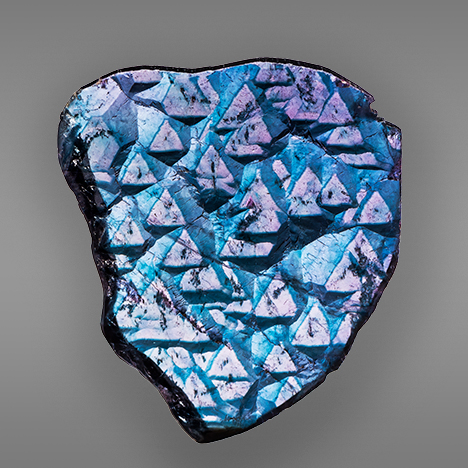Tourmaline Termination

Depending on their size, large tourmaline crystals are known as “hand” or “cabinet” mineral specimens. To be used in jewelry, specimens of sufficient quality must be cut to a suitable size. This generally results in all of the natural surfaces being ground off and polished away. On occasion, however, a natural surface on a crystal is so interesting that it is preserved and used as a gem in its own right. Such was the case with a blue cap elbaite tourmaline (figure 1) from Fianarantsoa, Madagascar.
During the cutting of this tourmaline, gem artist Falk Burger (Hard Works, Tucson, Arizona) saved the blue cap termination by sawing it off into a thin plate and mirror-polishing the sawn surface, thereby accentuating its remarkable trigonal growth features and pink and blue color zoning (figure 2, left). This resulted in the beautiful and unique designer gem seen in figure 1, which weighed 42.78 ct and measured 37.23 × 31.97 × 3.60 mm.

This gem was also very interesting when examined through a microscope (figure 2, right). In crossed polarizers, while looking perpendicular to the polished plate, interference colors were clearly visible, accentuating the growth of the tourmaline.



